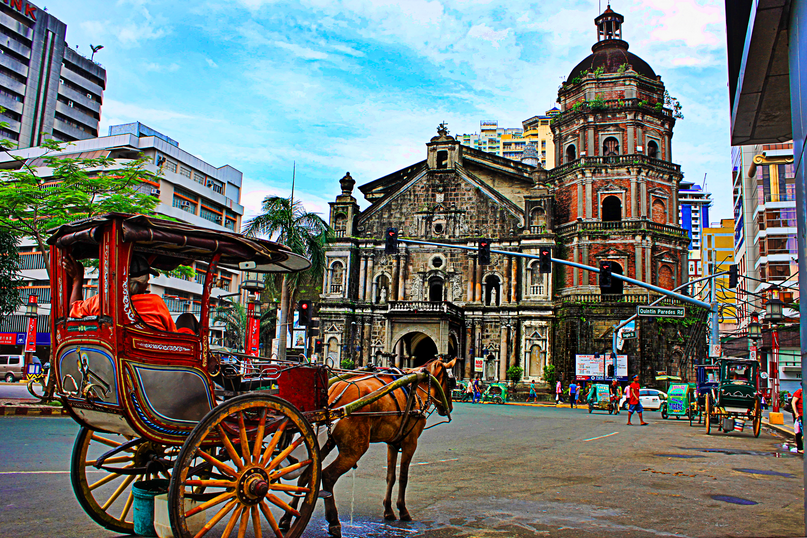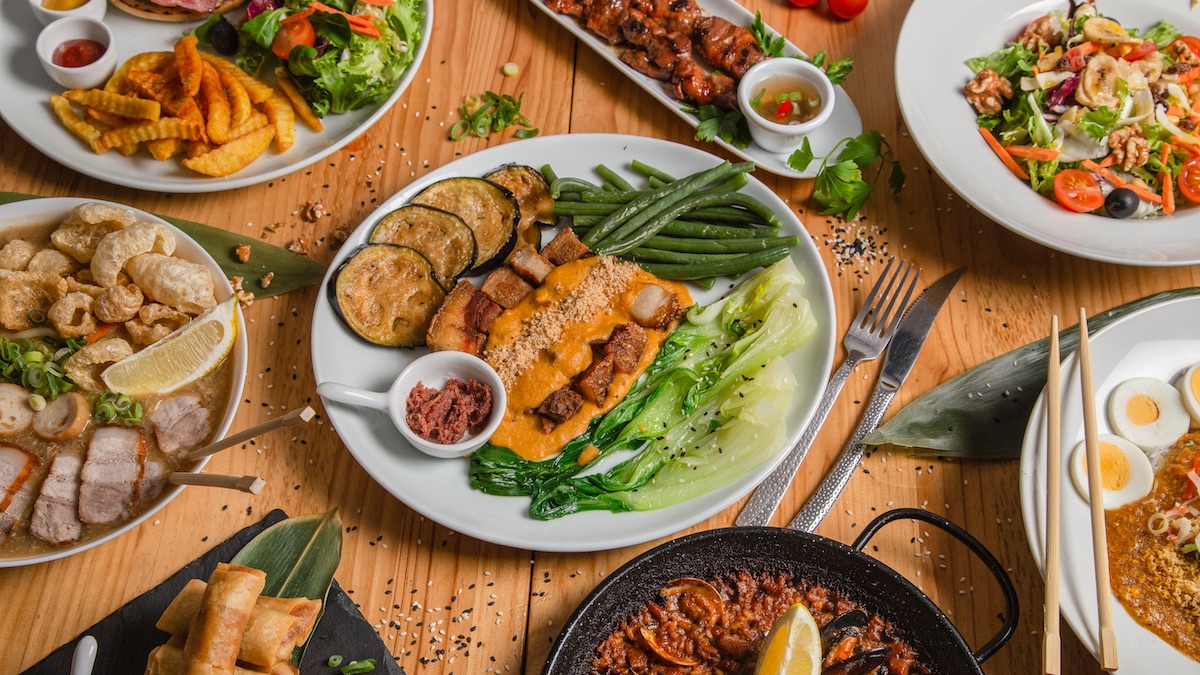Manila is a top tourist destination in the Philippines due to its rich history, diverse culture, modern attractions, natural beauty, and warm hospitality, supported by accessible transport and safety measures.

Cultural Significance
Manila stands as a focal point of Philippine culture, showcasing a diverse array of influences from its colonial past to its vibrant present. Here are some key aspects:
The Intramuros District
- Historic Architecture: The district features Spanish colonial-era buildings like Manila Cathedral and San Agustin Church.
- Cobblestone Streets: Walking down these streets transports you back in time.
- Kalesa Rides: Traditional horse-drawn carriages offer a unique method of exploring Intramuros.
- Museums and Shops: Several historic buildings now serve as museums, gift shops, and restaurants.
- For more information: Check the Intramuros Wikipedia page.
Cultural Festivals
- Aliwan Fiesta: This event brings together different regions to compete in dance and float parades.
- Sinulog Festival: Held in January, the festival fills the streets with colorful costumes and rhythmic drumming.
- Education and Entertainment: Festivals serve as both entertainment and educational experiences about Filipino culture.
- Further Reading: Visit the Culture of the Philippines Wikipedia page.
Churches and Temples
- Manila Cathedral and San Agustin Church: Prime examples of Spanish-era Roman Catholic architecture located in Intramuros.
- Quiapo Church: Known for the Black Nazarene, it attracts millions of pilgrims yearly.
- Chinese Temples and Islamic Mosques: Reflect the city’s religious diversity.
- Additional Information: See the Religion in the Philippines Wikipedia page for more insight.
Modern Attractions
While Manila offers a rich tapestry of history and culture, it also presents an array of modern attractions that appeal to tourists of all ages. Here are some elements that make Manila’s modern face just as exciting as its historical one:
Shopping Malls and Entertainment Centers
- SM Mall of Asia: One of the largest malls in the Philippines, featuring a wide range of international and local brands.
- Greenbelt Mall: Known for its luxurious boutiques and high-end dining options.
- KidZania: An interactive children’s city that offers role-playing activities for kids.
- Cinemas and Theaters: High-quality entertainment options, including IMAX theaters and live performance venues.
Nightlife in Manila
- Makati’s Poblacion: A popular area known for its trendy bars and nightclubs.
- Bonifacio Global City (BGC): Offers a more upscale nightlife experience with rooftop bars and sophisticated clubs.
- Street Food and Beer: Local vendors offer an array of Filipino street food to accompany your drinks.
- Live Music: Jazz bars, live bands, and karaoke lounges provide diverse musical experiences.
Modern Architecture
- City Skylines: Notable buildings like the Gramercy Residences and Ayala Tower One define Manila’s modern skyline.
- Green Architecture: Buildings like the Zuellig Building incorporate eco-friendly designs and technology.
- Art Installations: Public spaces often feature modern art, including sculptures and murals.
- Architectural Innovation: Modern structures are combining with historical buildings to create a unique urban landscape.
- Additional Reading: The Architecture of the Philippines Wikipedia page provides more background.
Gastronomic Delights
Manila serves as a culinary haven that is as diverse as its cultural and modern attractions. Tourists find themselves enticed by a range of food options, from traditional Filipino fare to international culinary delights. Below are some details:
Filipino Cuisine
- Adobo: A savory and slightly tangy dish of meat marinated in vinegar, soy sauce, and garlic.
- Sinigang: A sour soup often featuring pork, shrimp, or fish.
- Balut: A Filipino delicacy consisting of a fertilized duck egg with a nearly-developed embryo.
- Lechon: Roasted pig served during special occasions and gatherings.

Food Markets and Street Food
- Divisoria Market: Known for cheap finds and an array of local fruits, vegetables, and snacks.
- Quiapo Market: Offers an assortment of dried fish, fresh produce, and local crafts.
- Isaw: Grilled chicken intestines, a popular street food.
- Betamax: Skewered and grilled chicken blood, another popular street delicacy.
International Food Scene
- Japanese Restaurants: Manila has a growing number of sushi bars and ramen houses.
- Italian Fare: From pizza to pasta, Italian cuisine is widely available.
- American Chains: Fast-food chains like McDonald’s and Starbucks are ubiquitous.
- Fine Dining: There are also Michelin-starred restaurants offering international cuisines.
Educational and Historical Sites
Manila is a living museum of Philippine history and culture, making it a perfect destination for educational trips. From national museums to historic parks and forts, the city offers a wide range of educational and historical sites. Here are the details:
National Museum Complex
- National Museum of Fine Arts: Houses classical and modern Filipino art, including the famous “Spoliarium” by Juan Luna.
- National Museum of Anthropology: Focuses on ethnographic, anthropological, and archeological artifacts.
- Planetarium: Offers shows that explore our universe in a domed theater.
- More Information: The National Museum of the Philippines Wikipedia page provides an exhaustive list of what to expect.
Rizal Park
- Rizal Monument: A tribute to Jose Rizal, the Philippines’ national hero.
- Musical Fountain Shows: An entertaining display of water fountains synced to music.
- Botanical Gardens: Features native plants and provides a peaceful escape within the city.
Fort Santiago
- Historic Walls: The citadel is enclosed by tall walls and even has a moat.
- Rizal Shrine: A museum dedicated to Jose Rizal, who was imprisoned here before his execution.
- Interactive Exhibits: The site offers interactive tours that delve into Manila’s colonial past.

Accessibility and Convenience
One of the reasons Manila attracts a large number of tourists is its accessibility and the convenience it offers for both domestic and international travelers. The city has made considerable strides in becoming a travel-friendly destination. Here’s how:
Manila as a Transport Hub
- Ninoy Aquino International Airport (NAIA): Serves as the main international gateway to the Philippines.
- Domestic Flights: Manila is well-connected to other Philippine cities via frequent domestic flights.
- Sea Ports: The city also has sea ports like the Manila South Harbor for inter-island travel.
Public Transportation
- Jeepneys and Buses: Iconic forms of public transport that are both affordable and ubiquitous.
- Metro Rail Transit (MRT): Provides a fast and convenient way to traverse the city.
- Tricycles and Pedicabs: Useful for short distances, especially in smaller roads and residential areas.
- Taxi and Ride-Sharing Services: Available almost everywhere, offering comfortable travel options.
Tourist-Friendly Policies
- Tourist Information Centers: Easily accessible and provide free maps, brochures, and advice.
- Safety Measures: There’s a significant police presence in tourist areas for added safety.
- Tourist SIM Cards: Special prepaid SIM cards with attractive data and call packages.
- Hospitality and Language: English is widely spoken, and locals are generally friendly and accommodating.
Natural Attractions
Manila isn’t just about its bustling streets, shopping malls, and historical sites. The city also offers a fair share of natural attractions that make for a complete vacation experience. Here’s what you can look forward to:
Manila Bay Sunset
- Roxas Boulevard: A popular spot to catch the iconic Manila Bay sunset.
- Mall of Asia Seaside: Another venue where you can watch the sun dip below the horizon.
- Yacht Tours: Offers a unique way to enjoy the sunset from the water.
Nearby Beaches and Islands
- Corregidor Island: Known for its historical significance and natural beauty.
- Batangas Beaches: Just a few hours away, offering white sand and diving spots.
- Subic Bay: Offers a mix of leisure activities and natural beauty.
- Further Information: Visit the List of islands of the Philippines Wikipedia page to learn about more islands near Manila.
Parks and Recreational Areas
- Luneta Park: Offers open green spaces, fountains, and monuments, including the Rizal Monument.
- La Mesa Eco Park: A place to experience nature within the city, offering activities like boating and hiking.
- Quezon Memorial Circle: Provides open spaces and gardens for leisure and recreation.

Special Events and Festivals
Manila is a city that loves to celebrate. From ushering in the New Year with grandeur to honoring patron saints with colorful festivals, special events are a crucial part of the city’s cultural fabric. Here’s what you can expect:
New Year’s Eve Celebrations
- Fireworks Displays: Various parts of the city light up with extravagant fireworks.
- Street Parties: Multiple venues host lively parties complete with music, dancing, and food.
- Family Gatherings: It’s a tradition for families to celebrate together with a midnight feast.
- Further Reading: Learn about New Year traditions in the Philippines on the New Year’s Eve Wikipedia page.
Sinulog Festival
- Street Parades: Expect colorful costumes and vibrant floats during the parade.
- Cultural Shows: Performances showcase the local culture and history.
- Religious Aspect: The festival honors the Santo Niño, or the child Jesus.
Manila Day
- Commemorative Events: The day marks the founding of Manila and includes various ceremonies.
- Concerts and Performances: Local artists often hold free concerts.
- Sales and Discounts: Shops and restaurants often offer special Manila Day discounts.
Safety and Hospitality
Manila goes the extra mile to ensure that tourists feel welcome and safe. The city combines a strong security infrastructure with the warmth and friendliness for which Filipinos are renowned. Here’s what contributes to making the city a safe and hospitable destination:
Tourist Police and Safety Measures
- Tourist Police Units: Specialized police forces are trained to assist tourists in need.
- CCTV Surveillance: Major tourist spots and public areas are under constant surveillance.
- Safety Guidelines: Tourist information centers provide safety guidelines and emergency contact numbers.
Filipino Hospitality
- Friendly Locals: Filipinos are known for their friendliness and are often willing to help tourists.
- Local Traditions: Traditional Filipino hospitality often includes inviting guests to partake in meals and festivities.
- English Proficiency: Most Filipinos speak English, making it easier for tourists to communicate.